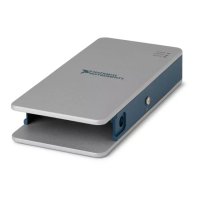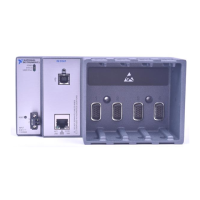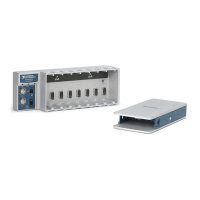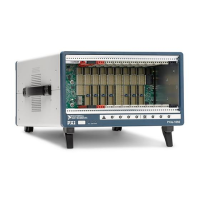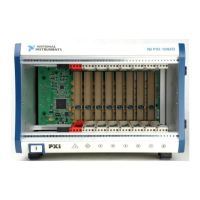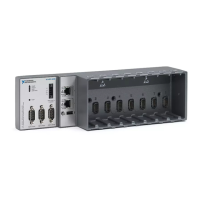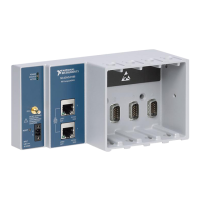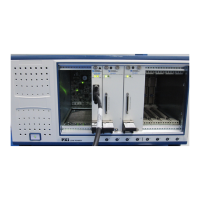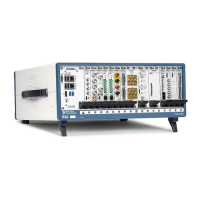© National Instruments | 1-33
NI cDAQ-9181/9184/9188/9191 User Manual
Parallel versus Serial DIO Modules
Digital module capabilities are determined by the type of digital signals that the module is
capable of measuring or generating.
• Serial digital modules are designed for signals that change slowly and are accessed by
software-timed reads and writes.
• Parallel digital modules are for signals that change rapidly and are updated by either
software-timed or hardware-timed reads and writes.
For more information about digital modules, refer to Chapter 4, Digital Input/Output and PFI.
cDAQ Module Interface
The cDAQ module interface manages data transfers between the STC3 and the C Series
modules. The interface also handles autodetection, signal routing, and synchronization.
STC3
The STC3 features independent high-speed data streams; flexible AI, AO, and DIO sample
timing, triggering, PFI signals for multi-device synchronization, flexible counter/timers with
hardware gating, digital waveform acquisition and generation, and static DIO.
• AI, AO, and DIO Sample Timing—The STC3 contains advanced AI, AO, and DIO
timing engines. A wide range of timing and synchronization signals are available through
the PFI lines. Refer to the following sections for more information about the configuration
of these signals:
– The Analog Input Timing Signals section of Chapter 2, Analog Input
– The Analog Output Timing Signals section of Chapter 3, Analog Output
– The Digital Input Timing Signals section of Chapter 4, Digital Input/Output and PFI
– The Digital Output Timing Signals section of Chapter 4, Digital Input/Output and PFI
• Triggering Modes—The cDAQ chassis supports different trigger modes, such as start
trigger, reference trigger, and pause trigger with analog, digital, or software sources. Refer
to the following sections for more information:
– The Analog Input Triggering Signals section of Chapter 2, Analog Input
– The Analog Output Triggering Signals section of Chapter 3, Analog Output
–The Digital Input Triggering Signals section of Chapter 4, Digital Input/Output and PFI
–The Digital Output Triggering Signals section of Chapter 4, Digital Input/Output and PFI
• Independent Data Streams—The cDAQ-9181/9191 supports six independent high-speed
data streams, which allow for up to six simultaneous hardware-timed tasks, such as analog
input, analog output, buffered counter/timers, and hardware-timed digital input/output.
The cDAQ-9184/9188 supports seven independent high-speed data streams, which allow
for up to seven simultaneous hardware-timed tasks, such as analog input, analog output,
buffered counter/timers, and hardware-timed digital input/output.
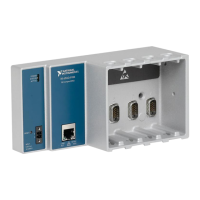
